Gwalior Fort, situated on top of a hill, finds its place among the best fortresses of India. It is also considered to be one of the most impenetrable forts in the country. Known for its great architecture and rich past, Gwalior Fort is a must-visit attraction when visiting Central India. Read about the history of the fort here, and find out what makes it such a wonder.
The history of the Gwalior Fort
According to historians, there isn’t any concrete proof to indicate exactly when the fort was constructed. However, a local legend tells us that it was built in 3 CE by a local king called Suraj Sen. A saint named Gwalipa came wandering to the fort and met the king, who was suffering from leprosy. When Gwalipa offered him some water from a sacred pond (now called Suraj Kund and located within the fort complex), he immediately became healthy again. As a thankful gesture to the saint, the king named the fort and the town after him. The saint then gave the king the title of ‘Pal’ (protector) and told him that as long as he and his family continue to bear this title, the fort would remain in their possession. Following this, 83 successors of Suraj Sen controlled the fort. But the 84th king, Tej Karan, did not bear the title and lost the fort.
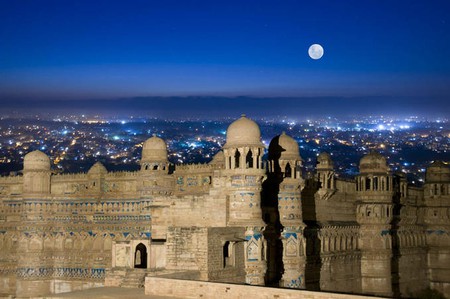
A panorama view of the Gwalior Fort at night | © Gyanendrasinghchauha / WikiCommons
Certain monuments and inscriptions inside the fort explain to visitors that it has been existent since the 6th century. A Huna emperor called Mihirakula used to rule the fort during that time. Later in the 9th century, Gurjara-Pratiharas captured the fort, governed, and also built the Teli Ka Mandir.Book stays and experiences,
hand-picked by our travel experts.
After being attacked and ruled by a couple of Muslim dynasties for three centuries, the Tomars captured the fort in 1398. Maan Singh was the last and the most distinguished Tomar ruler, and he constructed several monuments inside the fort complex. The beautiful turquoise blue-tiled Man Mandir Palace was built during his reign. And he also had a separate palace built for his wife Mrignayani; this structure is called the Gujari Mahal and is now a state archaeological museum. When Ibrahim Lodi attacked the fort in 1516, he defeated Maan Singh, who died, and the Tomars lost the fort.
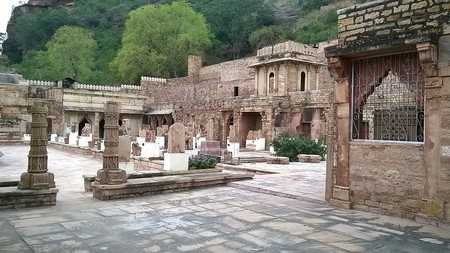
Gujari Mahal Archaeological Museum | © Kmohankar / WikiCommons
The Gwalior Fort then witnessed a brief period of rule by the Mughals, until the Marathas captured it and soon lost it to the East India Company. After this, there were many recurrent shifts between the rule of the Marathas and the Britishers. Finally, in 1844, the Maratha Scindia family of Gwalior, as the British government’s protectorate, occupied the fort.
During the rebellion of 1857, the fort saw great warfare – Rani Lakshmibai (the Queen of Jhansi) came fighting from Jhansi to Gwalior and sought shelter inside the fort. After fighting for days with the Britishers, she jumped from the fort on her horse and sacrificed her life. Until India gained independence in 1947, the Scindias continued ruling the city and constructed a number of monuments.

Intricate designs and architecture inside the Man Mandir Palace | © Vijayindiatours / WikiCommons
The structure of the Gwalior Fort
With well-maintained premises, the fort complex includes several temples, palaces and water tanks. The palaces here include the Man Mandir Palace, the Gujari Mahal, the Jahangir Mahal, the Shah Jahan Mahal and the Karan Mahal. The fort lies on an area of three square kilometres (1.1 square miles) and has two entrance gates: the main entrance being the Elephant Gate (Hathi Pul) on the north-east side with a long ramp and the other called the Badalgarh Gate on the south-west side. Man Mandir Palace sits on the north-east side.
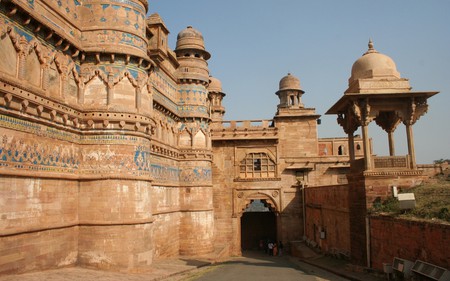
Elephant Gate (Hathi Pul) of Gwalior Fort | © Nagarjun Kandukuru / Flickr
The main monuments inside the Gwalior Fort complex
Jain temples form unique monuments inside the fort, with the Siddhachal Caves and Gopachal rock-cut Jain monuments being the two areas, complete with thousands of Jain Tirthankar idols defaced during the Mughal invasion. Teli Ka Mandir and Sahastrabahu (Sas-Bahu) Ka Mandir are the two architecturally rich Hindu temples here. Gurudwara Data Bandi Chhor is another holy place built inside the fort’s complex, and it was where Sikh Guru Hargobind Sahib was kept as a captive by Mughal Emperor Jahangir. Man Mandir Palace, Gujari Mahal, Assi Khamba Ki Baoli, and Suraj Kund are other important monuments found in the complex.
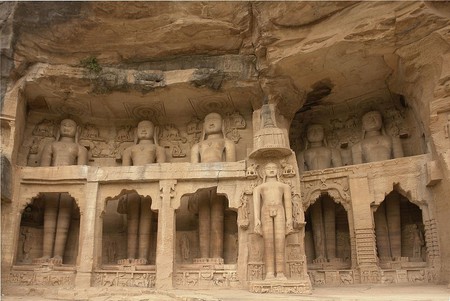
Gwalior Fort
Fast Facts
Location: Gwalior, Madhya Pradesh, India
Purpose: Constructed to honor a sage named Gwalipa
Built in: Said to have existed since the 6th century; several structures built during the course of history
Materials Used: Sandstone and lime mortar
Area: 741.3 acres
Current Status: The Archaeological Survey of India (ASI) looks after the fort
One among many hill forts of India, the Gwalior Fort stands on a vast rocky hill named Gopachal. Originally built in sandstone and lime mortar, the fort is one of the prominent structures in Gwalior. The fort has had a long history – sieged and captured by many rulers in the past. At one point of time, the Gwalior fort was regarded as north and central India’s most invincible fortress. The fort houses two palaces, ‘Gujari Mahal’ and ‘Man Mandir’, which were built by Raja Man Singh Tomar during the 15th Century. It also houses numerous temples, built by various kings at different point of time. Over the years, the fort has undergone many changes, but remains an important marvel of Gwalior. The fort is also associated with an interesting legend and has a rich history behind it.
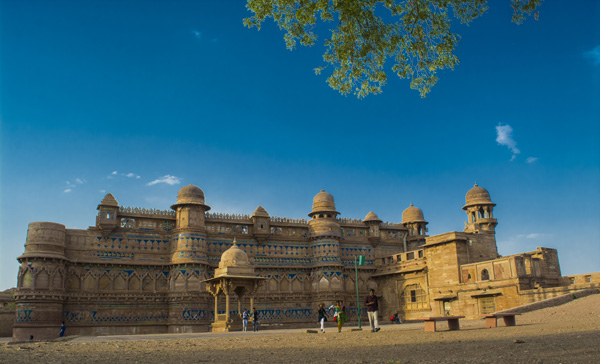
Early History of the Fort
The construction of the fort is associated with a legend and hence, the exact date of its construction is unknown. The legend has it that a local king named Suraj Sen ruled this region in 3 CE. The king developed leprosy, a deadly disease which couldn’t be cured in those days. When the king had lost all hopes, a sage named Gwalipa came to the king’s rescue and he miraculously cured the disease by asking the king to drink water from a sacred pond (it is believed that the present pond inside the fort is the same pond that helped the king). When the king was cured, he decided to build a fort to honor the sage and also named the city after the sage, which came to be known as Gwalior. The sage conferred the king with the title ‘Pal,’ meaning protector, and promised him that his descendants would rule over the fort as long as they bear the title ‘Pal’. After this incident, many descendants of Suraj Sen Pal ruled over the fort but his 84th successor, Tej Karan, lost the possession of the fort.
There are no historical records or evidences to prove the fort’s real age. Though inscriptions within the fort indicate that the fort must have been standing here from the 6th Century, but there is no solid proof to prove the same. However, there are certain evidences that suggest the existence of the fort from the late 9th Century. One such evidence is the existence of the ‘Teli ka Mandir’, a Hindu temple said to be built by the Gurjara-Pratiharas. From 10th Century onwards, the fort was ruled over by the kings of the Kachchhapaghata dynasty.
Later History of the Fort
Around the 10th Century, many Muslim rulers tried their best to capture the fort. Mahmud of Ghazni besieged the fort in 1022 CE, but he lifted the siege when presented with 35 elephants. Qutb al-Din Aibak, the first Sultan of the Delhi Sultanate, captured the fort in 1196, only to lose it a few years later. However, Iltumish, the third ruler of the Delhi Sultanate, recaptured the fort in 1232 CE. Around 1398, the fort was captured by the Tomars and it remained with them for a long time. Raja Maan Singh Tomar constructed several structures within the fort, changing its appearance forever. Meanwhile, rulers of the Delhi Sultanate were constantly trying to recapture the fort. One such attempt by Sikander Lodi failed in 1505, but his son Ibrahim Lodi managed to capture the fort in 1516, which resulted in the death of Raja Maan Singh Tomar. The fort was, however, soon taken by Babur, the founder of the Mughal dynasty. However, the Mughals lost it to the Sur ruler Sher Shah Suri, in 1542. In 1558, Mughal Emperor Akbar recaptured the fort and turned it into a prison, where he executed his prisoners and rivals.
Post the reign of Aurangzeb, the Mughal Empire weakened, resulting in the loss of the fort, which was now captured by the Rana chieftains of Gohad. Mahadaji Shinde of the Scindia dynasty captured it from Gohad Rana Chhatar Singh, but eventually lost the fort to the British. In 1780, the British gave away the fort to the Ranas, in exchange for their support during the Sepoy Mutiny in the 18th Century. The Marathas then captured it again from the Ranas, but lost it to the British during the Second Anglo-Maratha War. The British then largely controlled the fort and sometimes even gave up its ownership to the Scindia family for political reasons. In 1886, after capturing the whole of India, the British gave the fort to the Scindias, as the fort was of little importance to them at that time. The Scindias then ruled over the fort and even came up with their own structures within the fort, until it was finally taken by the government of India post-independence.
Layout of the Fort
The Gwalior fort spreads out over an area of 3 square km (741.3 acres), surrounded by concrete walls of sandstone. The fort encloses several structures, temples and two main palaces. The fort is divided into five parts. Each part is named after the direction on which it lies. There are two main gates, namely the Elephant Gate and the Badalgarh Gate. The Elephant Gate or the ‘Hathi Pol’ lies in the southeast and leads to the Man Mandir palace. On the southern side of the fort, stand an impressive set of temples (21 in number), dedicated to the Jain Tirthankaras. Other significant structures within the Gwalior Fort include the Karan Palace, the Jahangir Mahal, the Shah Jahan Mahal and the Gujri Mahal.
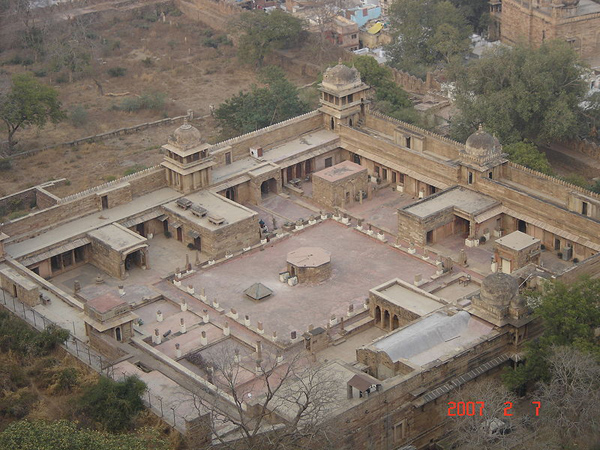
Temples within the Fort
There are several temples within the fort. Some of them are mentioned below:
- Siddhachal Jain Temple Caves – There are many idols of Jain Tirthankaras that are carved inside caves and on rocks. Carved during the period of 7th to 15th Century, the tallest among these idols is the Rishabhanatha or Adinatha, which stands at 58 feet 4 inches. The second tallest idol at 35 feet height belongs to Suparshvanatha.
- Idols on the Gopachal Hill – The Gopachal hill houses more than 1500 idols, many of which are carved on the rocks. The idols are said to be carved during the reign of Keerti Singh and Dungar Singh of the Tomar dynasty. One such idol of Bhagwan Parsvanath stands at an imposing 42 feet (height) and 30 feet (width). Many such idols were destroyed by the Mughal emperors when they captured the fort.
- Teli-ka-Mandir – The Teli-ka-Mandir is the most famous of all temples within the Gwalior Fort. This temple was built in the Dravidian architectural style and is notable for its generously sculpted exterior. The temple is the oldest part of the fort and houses Buddhist architectural elements as well. Teli-ka-Mandir, which originally housed Vishnu as its main deity, now has Shiva as the main deity.
- Sas-Bahu Temple – These are basically two pillared temples that stand next to each other, one larger than the other. Originally, there was only one temple, dedicated to Lord Vishnu. This temple was frequently visited by the queens of the Kachchhapaghatas. Later, another temple dedicated to Lord Shiva was built next to this temple, so that the daughter-in-law of the king, who was an ardent Shiva devotee, could worship her favorite deity. Since the temples were visited by the queen and her daughter-in-law, the pillared temples were collectively known as the Sas-Bahu Temple.
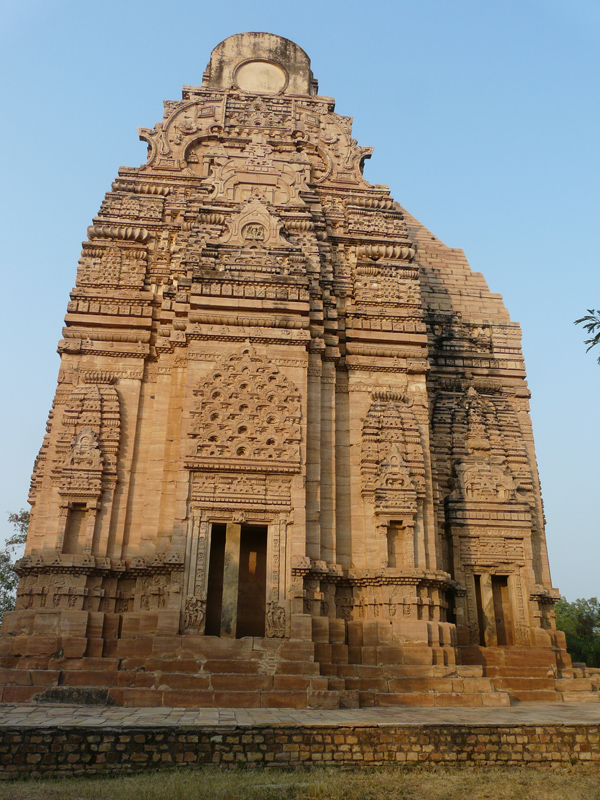
Palaces within the Fort
There are many palaces within the fort that were built by different kings at different point of time. Some of them are mentioned below:
- Man Mandir Palace – Built by Raja Man Singh Tomar in the 15th Century, Man Mandir Palace served as the main residence of the rulers of the Tomar dynasty for a long period of time. Styled tiles of various colors, including turquoise, green, and yellow are used to decorate the interiors of the palace.
- Gujari Mahal – This, too, was built by Raja Man Singh Tomar for his beautiful wife, Mrignayani, a Gujar princess. It is said that the queen of Man Singh demanded a private palace for herself, which resulted in the construction of the famous Gujari Mahal. Today, the palace has been converted into a museum, which houses rare artefacts and sculptures of Hindu and Jain deities, dating back to the first and second Centuries BC.
- Vikram Mahal – This was originally built as a temple, dedicated to Lord Shiva, by Vikramaditya Singh of the Tomar dynasty. The palace was restored after it was destroyed by the Mughal emperors during their reign.
- Karn Mahal – This palace is named after the king who built it. Karn Mahal served as the private residence of Kirti Singh, who was also known as Karn Singh. He was the second king of the Tomar dynasty.
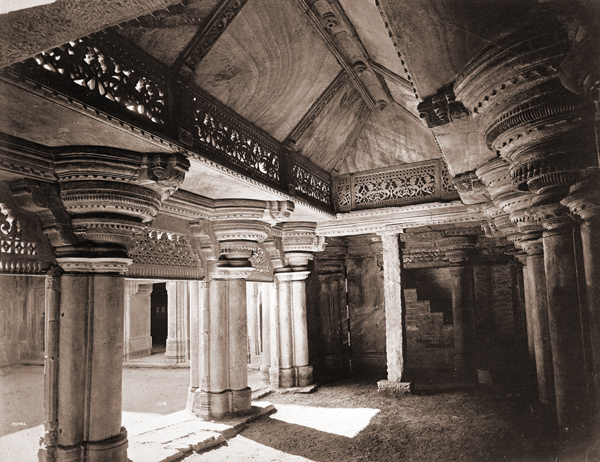
Other Important Structures
There are several other important structures that stand within the premises of the Gwalior Fort. Each structure has its own historical significance and was built with multiple purposes. Some of the structures are mentioned below:
- Garuda Monument – The Garuda monument stands next to the Teli ka Mandir. The structure, which was built to honor Lord Vishnu, is the highest point of the fort. Indo-Islamic architectural style has been used to build this imposing monument.
- Chhatri of Bhim Singh Rana – This impressive domed shaped pavilion was built by Chhatra Singh, the successor to Bhim Singh Rana, as a memorial to his father. There is also an artificial lake next to the pavilion, which was also built by Chhatra Singh. King Chhatra Singh took over the fort after defeating the Mughal Satrap Ali Khan.
- Scindia School – This school was built exclusively for the prince and princesses of the Scindia family. It was built by Madho Rao Scindia in the year 1897, after the British had handed over the fort to the Scindias.
- Gurdwara – The fort also houses a Gurdwara, which was built as a memorial to Guru Hargobind, the sixth Sikh Guru. There are no significant evidences to prove when and by whom the Gurdwara was built.
Gwalior Fort, Gwalior Overview
Referred to as ‘the pearl amongst fortresses in India’ by Mughal emperor Babur, the Gwalior Fort is one of the most impenetrable fortresses located in the entire northern and southern India and is a place you definitely must visit. Situated on the top of a vast rocky mountain near Gwalior in Madhya Pradesh in central India, this imposing structure dominates the entire city of Gwalior. An inseparable part of the identity and architecture of the city, evidence suggests that it has been around since 6th Century. It is also the places where the second oldest reference of the number ‘zero’ has been found in the form of a carving inside a temple on the top of the fort.
The construction of the Gwalior Fort took place in two parts, in two different time periods and thus, this architectural marvel has an intriguing history attached to it. It has passed from the possession of one dynasty to the other, multiple times. The entire fort complex is well maintained and includes temples, water tanks and palaces such as Man Mandir, the Gujari, the Jahangir, the Karan, and the Shah Jahan.
Best Time to Visit
The period from October to March is most suitable to visit the fort as the climate in this month is pleasant. Though December and January are chilly, but tourists still like to visit the fort in this period.
Visiting Hours
Gwalior Fort is opened for the tourists from 9:00am to 5:00pm on all days. It takes around one to two hours to visit the whole fort. Sound and light show is also organised in the fort. The show in Hindi starts at 7:30pm and in English from 8:30pm.


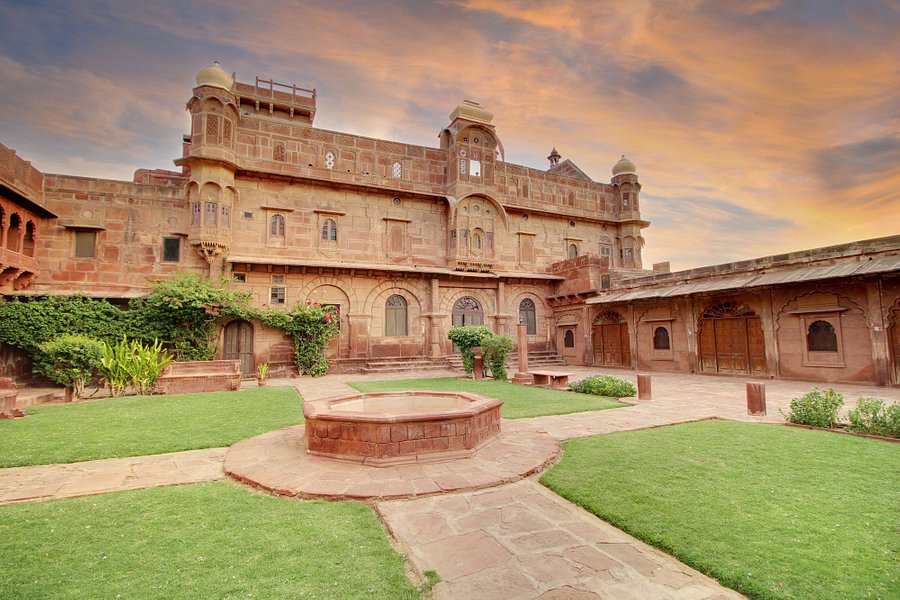
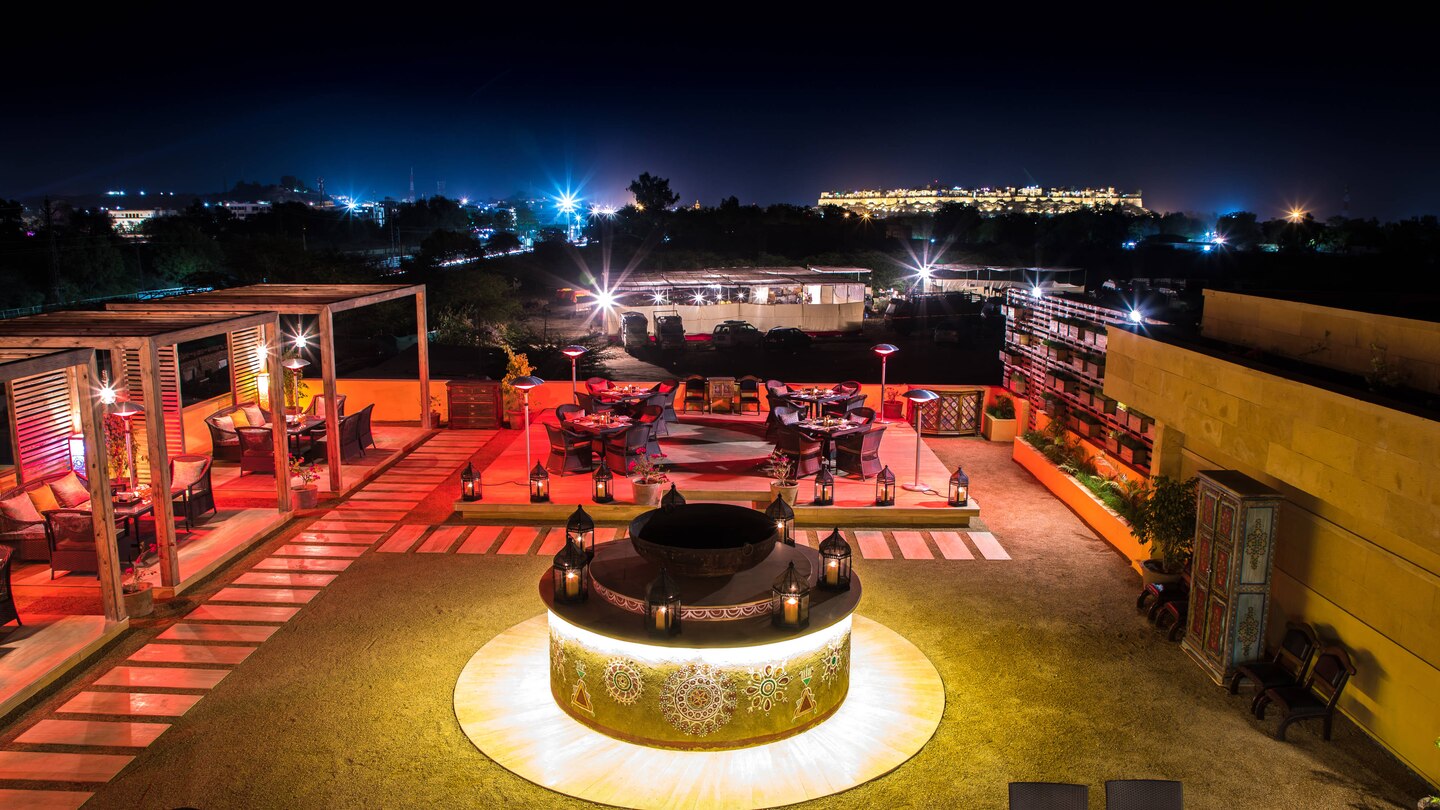
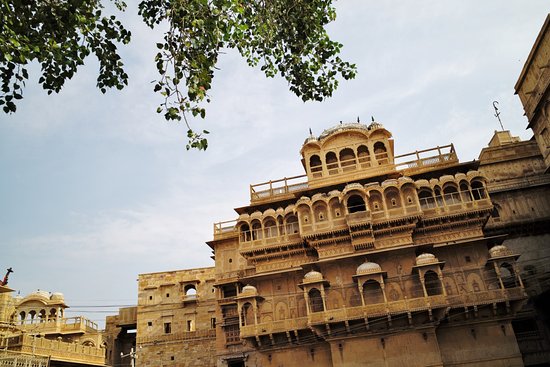
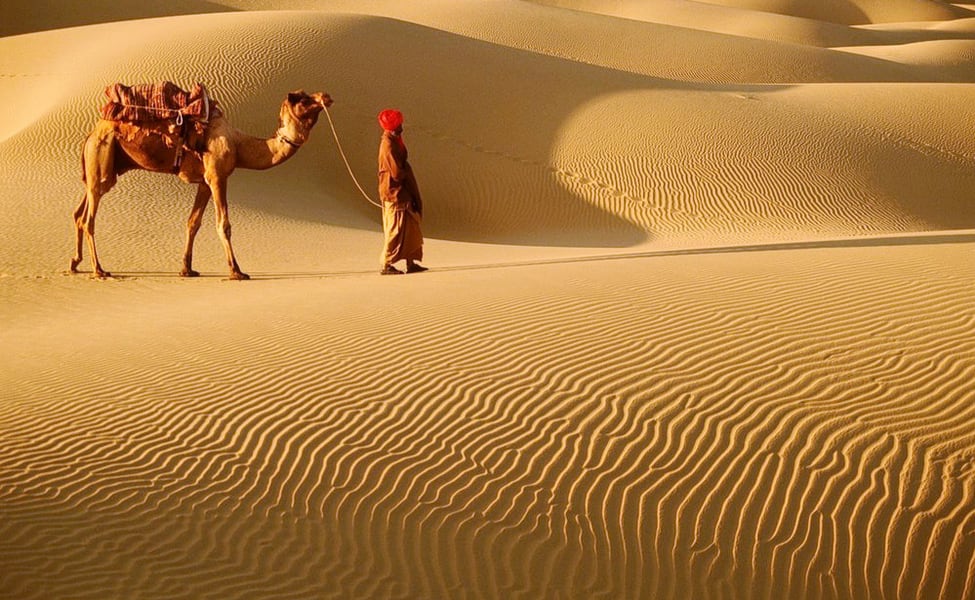
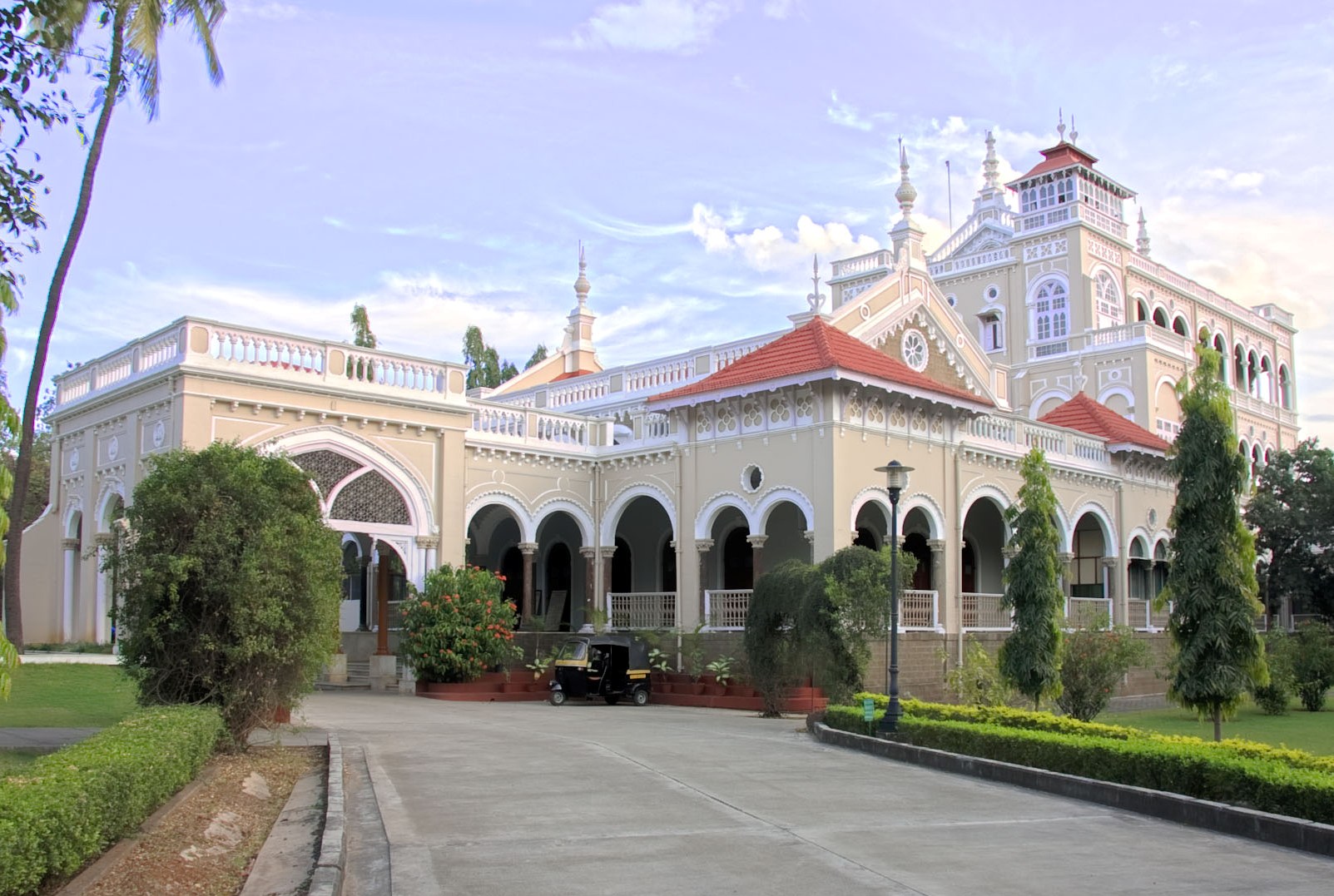
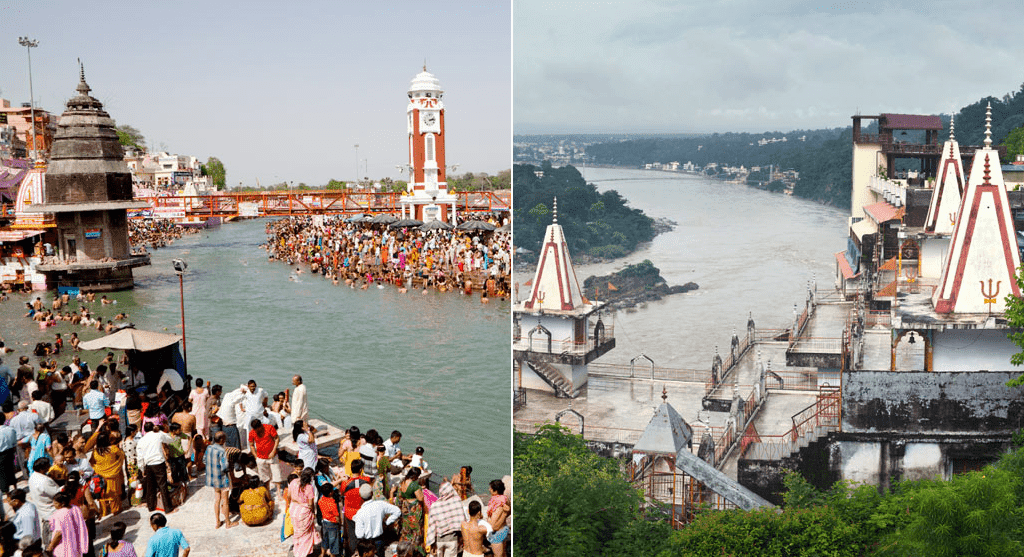
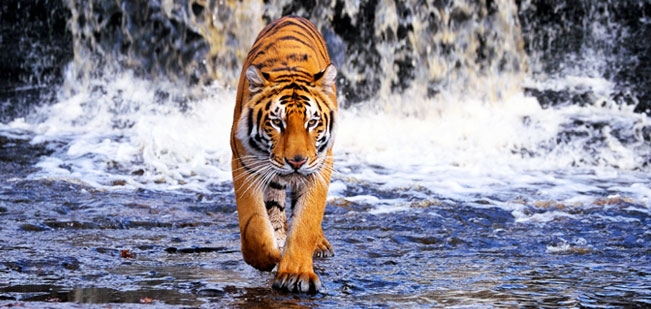
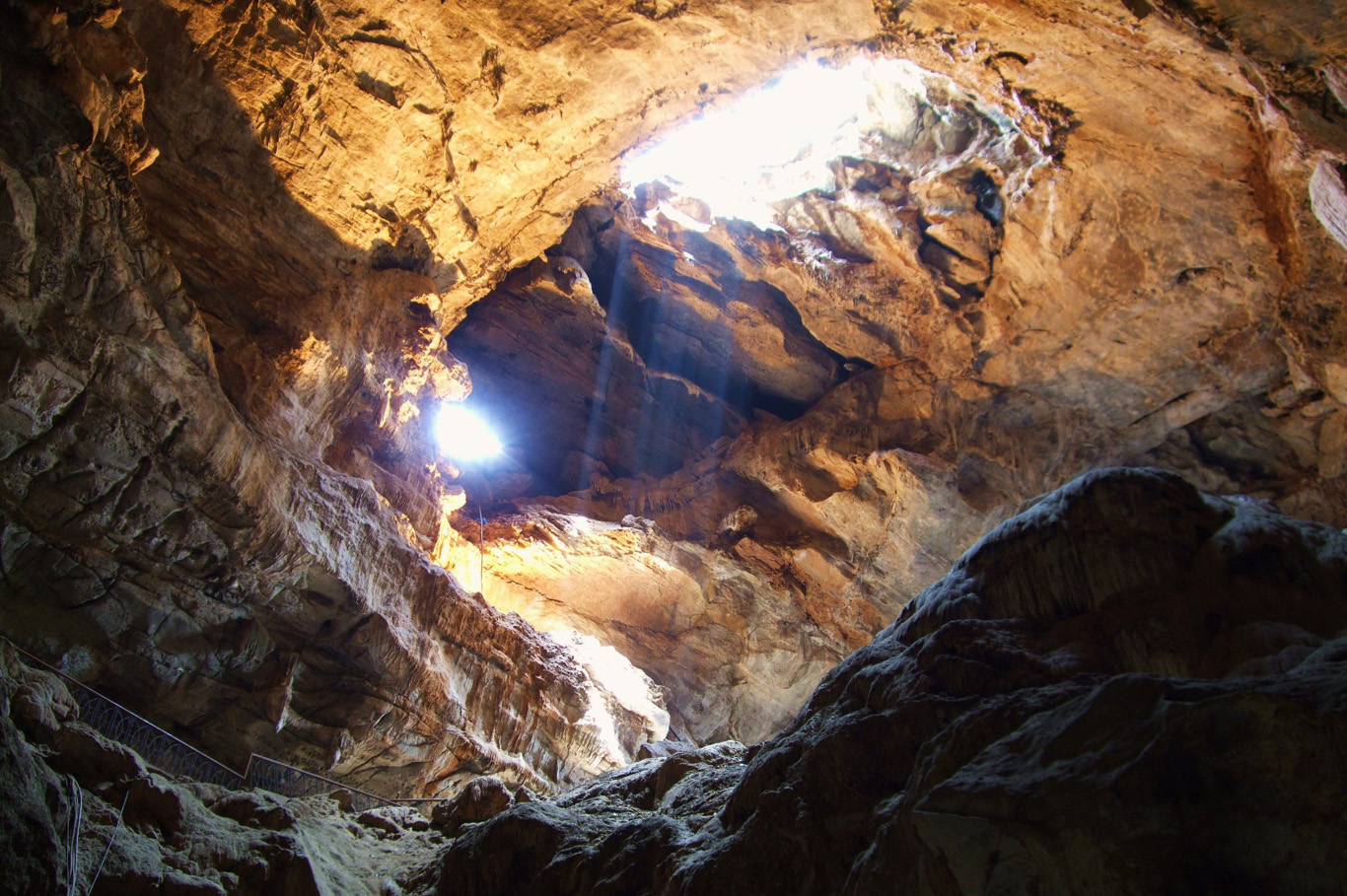


4 Comments
Comments are closed.